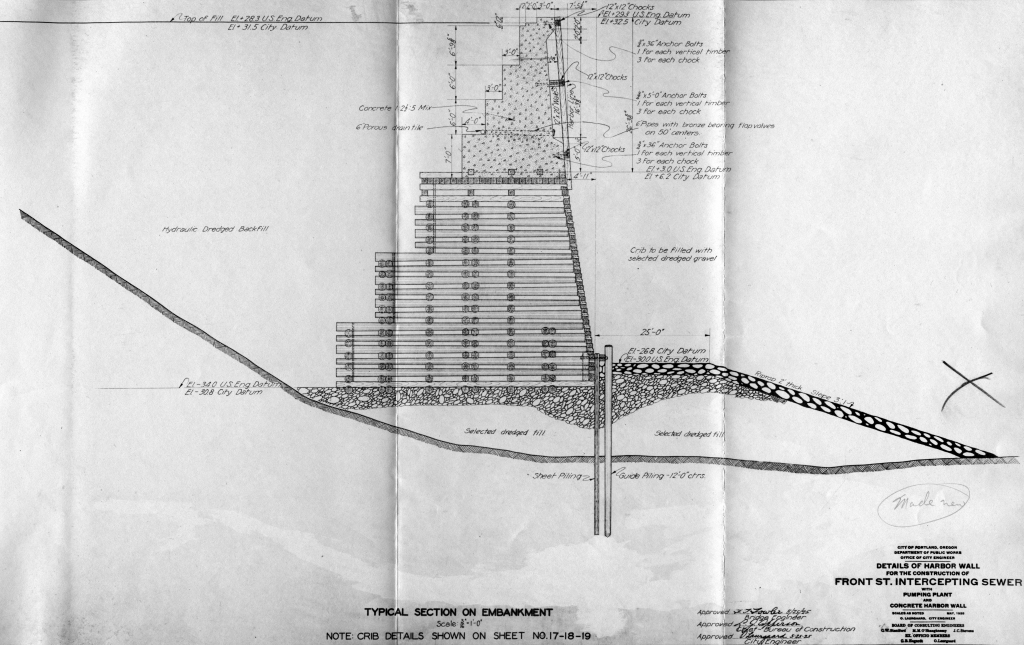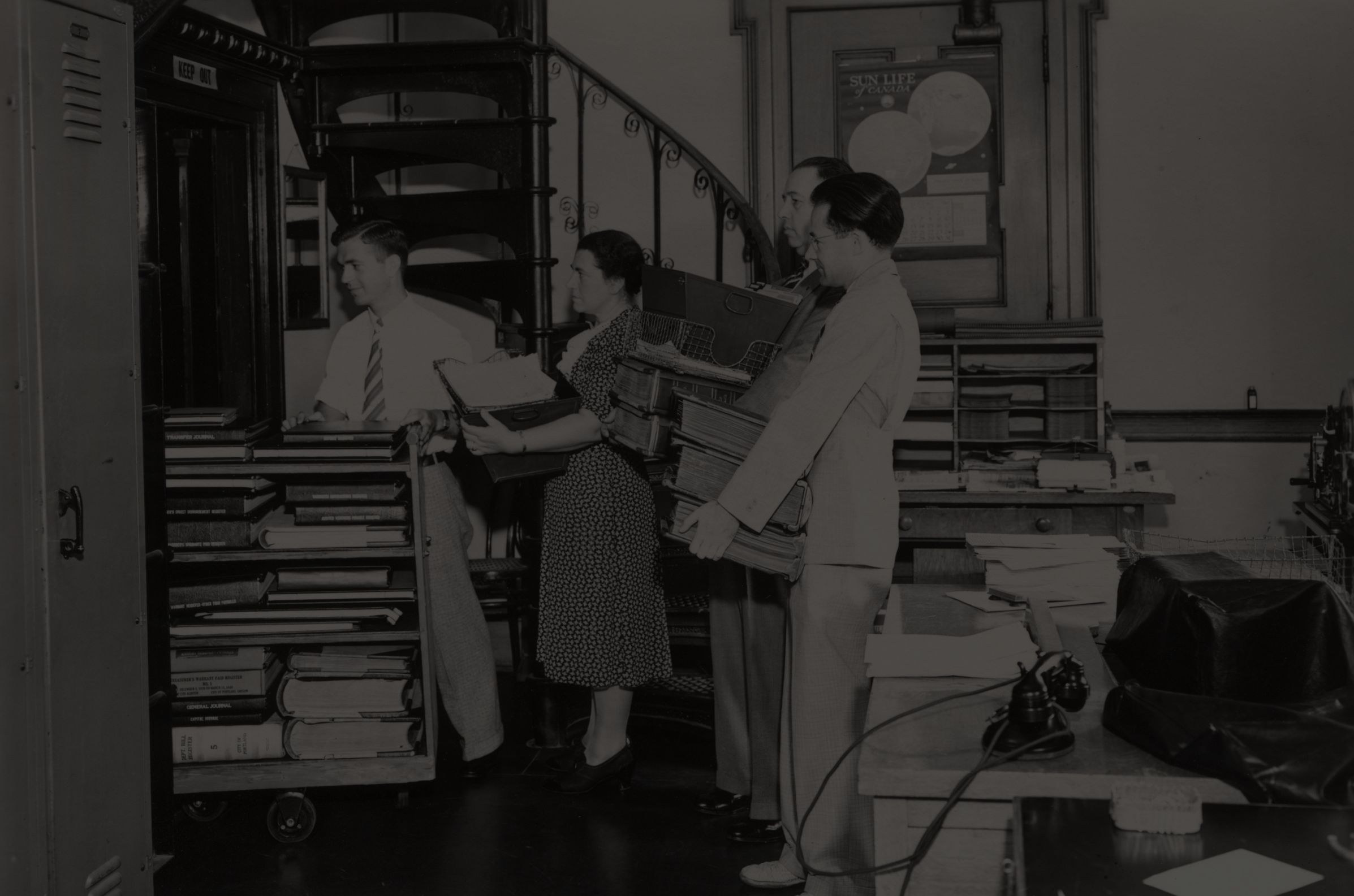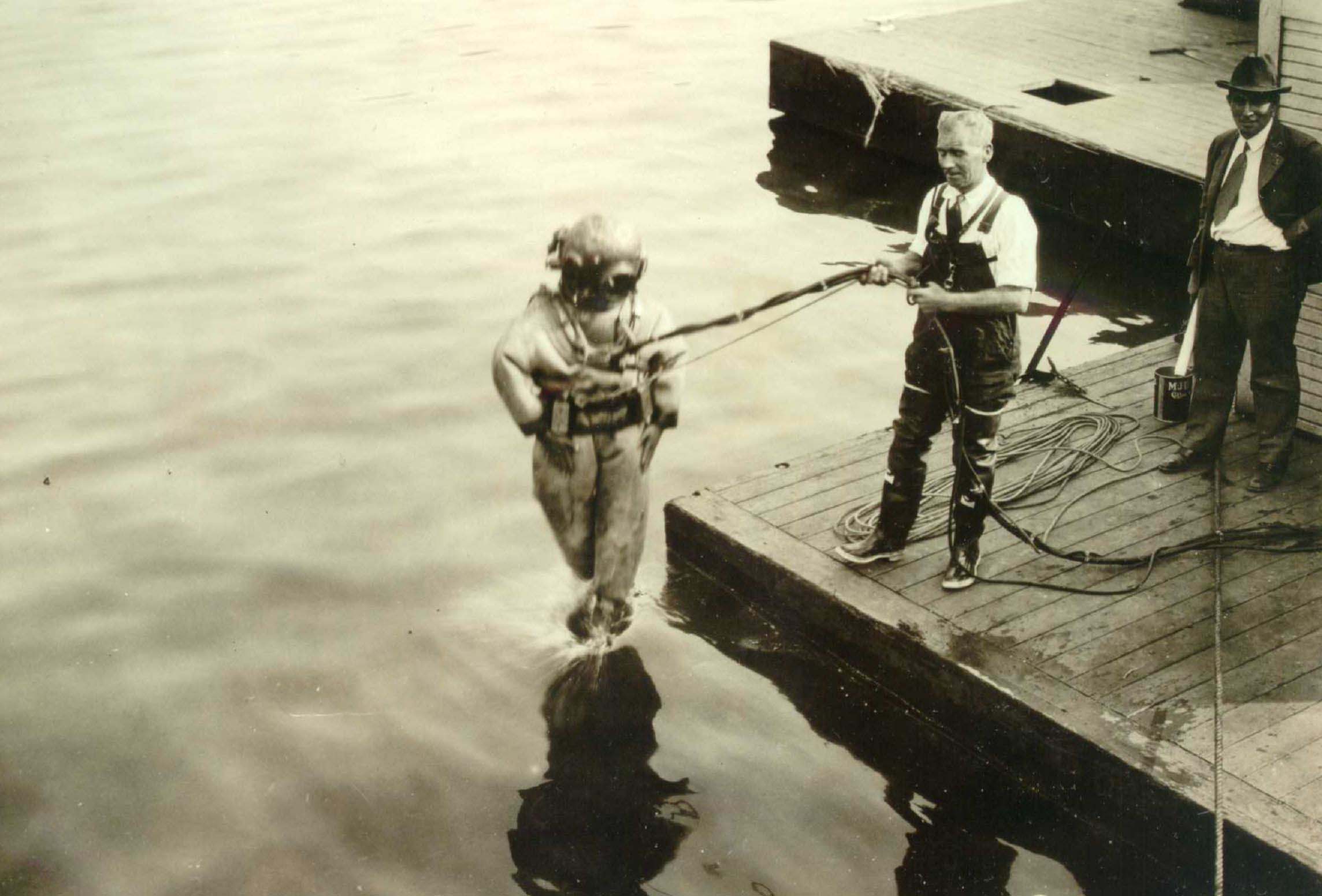1927-1929
Keeping Sewage in the Willamette and Reclaiming the Riverfront
By 1929 most of Portland’s waterfront had become a wasteland. Winter floods washed sewage into basements, and the stench kept most people away from the area. The problem became so bad that property owners in the area agreed to finance a city project to solve the problem. The Waterfront Improvement Project, the largest sewer project yet undertaken by the city, was the solution coordinated by the City Engineer, Olaf Laurgaard.


The two-part project included the construction of two intercepting sewer lines running from Jefferson to Ankeny Street, and from Glisan to Jefferson Street. At Ankeny, the two lines merged at a pump station, which flushed the sewage into the Willamette. The second phase of the project was a seawall stretching from Glisan to Jefferson Street, devised to keep the sewage in the river. The result was the reclamation of waterfront property, and an important defense against flooding. Unfortunately, the project did not improve the quality of the river, a problem which would have to be addressed in the near future as the city continued its rapid growth.


City of Portland Archives and Record Center
The Archives and Records Management Division operates the City of Portland Archives
and Records Center, making city administrative and historical records accessible to the public
and City employees for research and inspection in accordance with Oregon’s public records laws.
http://www.portland.gov/archives
Research
Please contact us via email
or phone to schedule an appointment.
Location
1800 SW 6th Avenue, Suite 550
Portland, OR 97201
Contact Information
(503) 865-4100
PARC@portlandoregon.gov







